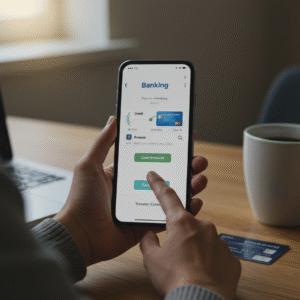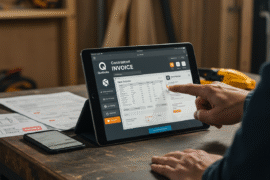This article may contain references to products or services from one or more of our advertisers or partners. We may receive compensation when you click on links to those products or services. Nonetheless, our opinions are our own.
The information presented in this article is accurate to the best of our knowledge at the time of publication. However, information is subject to change, and no guarantees are made about the continued accuracy or completeness of this content after its publication date.
- Key Highlights
- Introduction
- Understanding Layaway
- History of Layaway Plans
- Beginner’s Guide to Using Layaway
- Step-by-Step Guide to the Layaway Process
- Pros and Cons of Layaway
- Layaway vs. Other Payment Methods
- Popular Stores Offering Layaway in the U.S.
- Practical Tips for Managing Layaway Plans
- Conclusion
- Frequently Asked Questions
- Recommended Reads
Key Highlights
- Layaway programs allow customers to hold items by paying a small deposit and paying the rest in installments. This is ideal for people with low income or poor credit.
- These programs were widely popular in difficult times in the past. They are now experiencing a resurgence, especially before the holidays or for larger purchases.
- Unlike credit cards, layaway does not add extra charges or negatively impact your credit score, although there can be service and cancellation fees.
- Online layaway provides convenience and does not require space in physical stores.
- Major retailers such as Big Lots and Burlington Coat Factory still offer layaway options for various items.
Introduction
Layaway plans offer an easy way to pay for items without paying the full price upfront. With this plan, customers can make incremental payments over time while the store holds the products for them. Typically, there is a small fee associated with using this plan. Layaway is available both in physical stores and online, making it accessible to those who struggle to manage larger purchases. Understanding how layaway works can help you make more informed purchasing decisions, especially for seasonal or larger purchases.
Understanding Layaway
Layaway can be an excellent choice for individuals with poor credit or limited funds. You begin by making an initial payment on the item you wish to purchase. After that, you pay the remaining balance through regular installments over a set period. Once the full amount is paid, you can take the item home.
Retailers benefit from layaway by maintaining customer commitment. They securely hold items until the payments are completed. If a customer fails to make the necessary payments, the item is returned to the store’s inventory. The following sections explain the basics of how layaway operates.
Definition and Basic Concept
Layaway allows customers to set aside items by paying a small deposit, followed by regular payments over a designated period, often weekly or monthly. Once the balance is paid in full, the customer receives the item.
Unlike traditional credit, layaway does not involve additional charges or affect the customer’s credit score, making it appealing for those without a credit history or with low income. However, some stores may charge extra fees, such as cancellation fees or service charges, especially if payments are missed or the plan is canceled.
Online layaway programs provide the added benefit of storing reserved items in distribution centers, which means there is no need for in-store storage. Now, let’s explore the history behind this payment method.
History of Layaway Plans
The concept of layaway emerged during the Great Depression, a time when many families struggled to afford essential items. By allowing them to pay over time, layaway made it easier for families to purchase necessities despite financial difficulties.
With the rise of credit cards in the 1980s, the popularity of layaway programs declined. However, during the Great Recession of the late 2000s, layaway made a comeback as retailers sought to assist shoppers with limited credit options and boost sales.
Today, stores are required to adhere to regulations set by the Federal Trade Commission, ensuring that layaway terms are clearly outlined in written agreements. Let’s see how beginners can benefit from using layaway.
Beginner’s Guide to Using Layaway
For beginners, understanding layaway starts with the basics. It allows you to purchase products over time without having to pay the entire amount upfront. This option is especially helpful for those with low income or poor credit since no credit checks are required, and there is no added interest.
To get started, you’ll need enough money for the deposit and the commitment to follow the payment plan. The store holds the item for you until the entire balance is paid. The next section explains the essential requirements for starting a layaway plan.
Essential Requirements for Starting a Layaway Plan
To begin, you must obtain a written agreement from the store. This agreement will outline the payment schedule, any applicable fees, and the cancellation policy. Both the customer and the store should be clear on their respective responsibilities.
The typical deposit ranges from 10% to 20% of the purchase price, depending on the store’s policies. The agreement will also specify which items are eligible for layaway.
It’s important to adhere to the payment schedule, as failing to make payments on time could result in cancellation fees and the loss of any payments already made. Let’s now look at the steps involved in the layaway process.
Voted "Best Overall Budgeting App" by Forbes and WSJ
Monarch Money helps you budget, track spending, set goals, and plan your financial future—all in one app.
Get 50% OFF your first year with code MONARCHVIP
Step-by-Step Guide to the Layaway Process
Starting a layaway plan is straightforward. First, you make a deposit and possibly pay a small service fee. The store then sets aside the item for you. You’ll follow the payment plan based on the terms specified in the agreement.
Payments can be made weekly, biweekly, or monthly, depending on the store’s schedule. The store holds the item until you complete all payments. When you finish paying, you can either pick up the item or have it delivered (for online layaway orders). Let’s review the main steps involved in the process.
Step 1: Selecting Items Eligible for Layaway
Not all products are eligible for layaway. Typically, stores offer layaway for higher-value items such as electronics, jewelry, and furniture. This helps with storage management and ensures the program runs efficiently.
Retailers like Big Lots and Burlington Coat Factory provide lists of items eligible for layaway. Familiarizing yourself with these lists will help you avoid confusion or extra fees in case of early cancellation. Be sure to check both in-store and online for options that fit your budget.
Additionally, check the availability of the product to avoid surprises when you go to pick it up. Understanding the store’s payment terms will also prevent misunderstandings.
Step 2: Understanding Payment Terms and Conditions
One of the key aspects of layaway is understanding the payment terms and conditions. Stores set deadlines for payments, which can range from a few weeks to several months. Be mindful of any late fees and the consequences of missing a payment.
If you decide to cancel the layaway plan, there may be cancellation fees to cover restocking and administrative costs. Missing a payment may result in losing the deposit or the item.
Online layaway programs typically involve automatic payment deductions from your bank account, so it’s crucial to understand these terms to ensure a smooth process. Now, let’s take a look at the benefits and drawbacks of layaway.
Pros and Cons of Layaway
Advantages of Using Layaway
Layaway allows you to make large purchases without going into debt. Since it does not require credit checks or interest payments, it is an excellent option for people looking to avoid building up debt.
This method is especially useful during the holidays, as it helps families budget for expensive items like electronics or jewelry without needing to make large upfront payments.
Additionally, layaway programs often have simpler approval processes, making them accessible to a wide range of people, regardless of their financial situation.
Disadvantages of Using Layaway
While layaway has no interest charges, it is not entirely free. Most plans come with service fees, which typically cover storage costs. If you cancel the plan, you might have to pay cancellation fees and lose any payments you’ve made.
Strict payment deadlines can also be problematic. Missing a payment could result in losing your deposit or the item itself. Layaway is generally intended for higher-value items, so for less expensive items, the associated fees might outweigh the benefits.
It is essential to compare layaway with other available payment options to determine which method is best for your needs.
Layaway vs. Other Payment Methods
Comparing layaway with credit cards and installment plans can help you choose the best payment method for your situation. While layaway does not involve interest charges and does not affect your credit score, it does require that you make payments in full before receiving the item.
On the other hand, credit cards allow immediate purchases but come with interest charges and the potential to negatively affect your credit score if not managed properly.
Installment plans let you receive the item upfront but often involve interest and can also hurt your credit score if payments are missed.
Layaway vs. Credit Cards
Layaway requires that you make payments before receiving the item, with no interest charged. Credit cards, however, allow immediate purchases but often come with high-interest rates. If you fail to pay off the balance on your credit card, it can negatively impact your credit score and lead to debt.
Layaway vs. Installment Plans
With layaway, you must pay the entire balance before receiving the item, while installment plans allow you to take the item home immediately and make payments over time, typically with added interest.
Layaway is beneficial for those with limited income, as it offers a way to pay over time without the pressure of high interest rates. However, installment plans allow for quicker access to the item, but they can negatively impact your credit score if payments are missed.
Popular Stores Offering Layaway in the U.S.
Many stores in the U.S. still offer layaway programs for customers who want to make payments without using credit. Retailers such as Burlington Coat Factory and Big Lots provide these options, each with varying rules and payment terms.
Retail Chains with Layaway Options
Major chains like Walmart and Kmart also offer layaway during the holiday season. These stores usually provide low fees and simple terms for customers looking to avoid credit card debt.
Online Stores with Layaway Services
Many online retailers are now offering layaway services, allowing customers to reserve items without paying in full upfront. These stores often charge a small fee to start the layaway plan and allow customers to stick to a payment schedule.
Practical Tips for Managing Layaway Plans
To manage layaway successfully, start with a budget that ensures you can meet the payment deadlines. Be vigilant about the due dates to avoid late fees or cancellation charges.
Always inquire about fees and policies before starting a layaway plan. Clear communication will help you manage your plan more effectively, especially during busy shopping seasons.
Best Practices for Successful Layaway Use
Maintain a budget that aligns with your income, and stay up to date on your payments. Keep in contact with store staff to clarify any questions you may have about terms and avoid unexpected charges.
Understanding your financial history can also help you assess whether layaway is the right choice for your long-term financial goals.
Common Pitfalls to Avoid in Layaway
Failing to make payments on time can result in the cancellation of your plan and the loss of your deposit. Always read the agreement carefully to avoid surprise charges or fees.
Be cautious of stores that conduct credit checks or have rigid policies. During the holiday season, high demand may also slow down layaway processing, making it difficult to pick up items when expected.
Conclusion
Layaway programs offer a straightforward way to make larger purchases without accumulating debt. They are especially helpful for individuals with limited income or poor credit. Layaway helps you avoid interest charges and makes budgeting for big purchases more manageable.
Understanding the terms of your agreement is crucial to avoiding unexpected fees or late payments. With careful planning, layaway can be a valuable tool for managing your shopping needs, especially during busy shopping seasons.
Frequently Asked Questions
What Happens if I Miss a Layaway Payment?
If you miss a payment on your layaway, you may face penalties or even lose your plan. Many stores keep your deposit, but some may allow you to reinstate the plan. Always check the store’s rules beforehand.
Can I Cancel a Layaway Plan Anytime?
Yes, most stores allow you to cancel your layaway plan, but the rules vary. Some stores offer full refunds for early cancellations, while others charge cancellation fees. Be sure to review your agreement to understand the terms clearly.
What Happens if I Miss a Layaway Payment?
If you miss a payment on your layaway, you may face penalties, such as forfeiting your deposit or losing the item. Some stores may offer the option to reinstate the plan, but this depends on their specific policies. Always check the store’s rules before entering into a layaway agreement.
Can I Cancel a Layaway Plan Anytime?
Yes, most stores allow you to cancel your layaway plan. However, cancellation policies differ by retailer. Some stores may offer a full refund if canceled early, while others may charge cancellation fees. Be sure to review the terms of the agreement before starting the plan.

Reviewed and edited by Albert Fang.
See a typo or want to suggest an edit/revision to the content? Use the contact us form to provide feedback.
At FangWallet, we value editorial integrity and open collaboration in curating quality content for readers to enjoy. Much appreciated for the assist.
Did you like our article and find it insightful? We encourage sharing the article link with family and friends to benefit as well - better yet, sharing on social media. Thank you for the support! 🍉
Article Title: How Does Layaway Work? Pros and Cons You Should Know
https://fangwallet.com/2025/05/15/layaway/The FangWallet Promise
FangWallet is an editorially independent resource - founded on breaking down challenging financial concepts for anyone to understand since 2014. While we adhere to editorial integrity, note that this post may contain references to products from our partners.
The FangWallet promise is always to have your best interest in mind and be transparent and honest about the financial picture.
Become an Insider

Subscribe to get a free daily budget planner printable to help get your money on track!
Make passive money the right way. No spam.
Editorial Disclaimer: The editorial content on this page is not provided by any of the companies mentioned. The opinions expressed here are the author's alone.
The content of this website is for informational purposes only and does not represent investment advice, or an offer or solicitation to buy or sell any security, investment, or product. Investors are encouraged to do their own due diligence, and, if necessary, consult professional advising before making any investment decisions. Investing involves a high degree of risk, and financial losses may occur including the potential loss of principal.
Source Citation References:
+ Inspo
There are no additional citations or references to note for this article at this time.












































